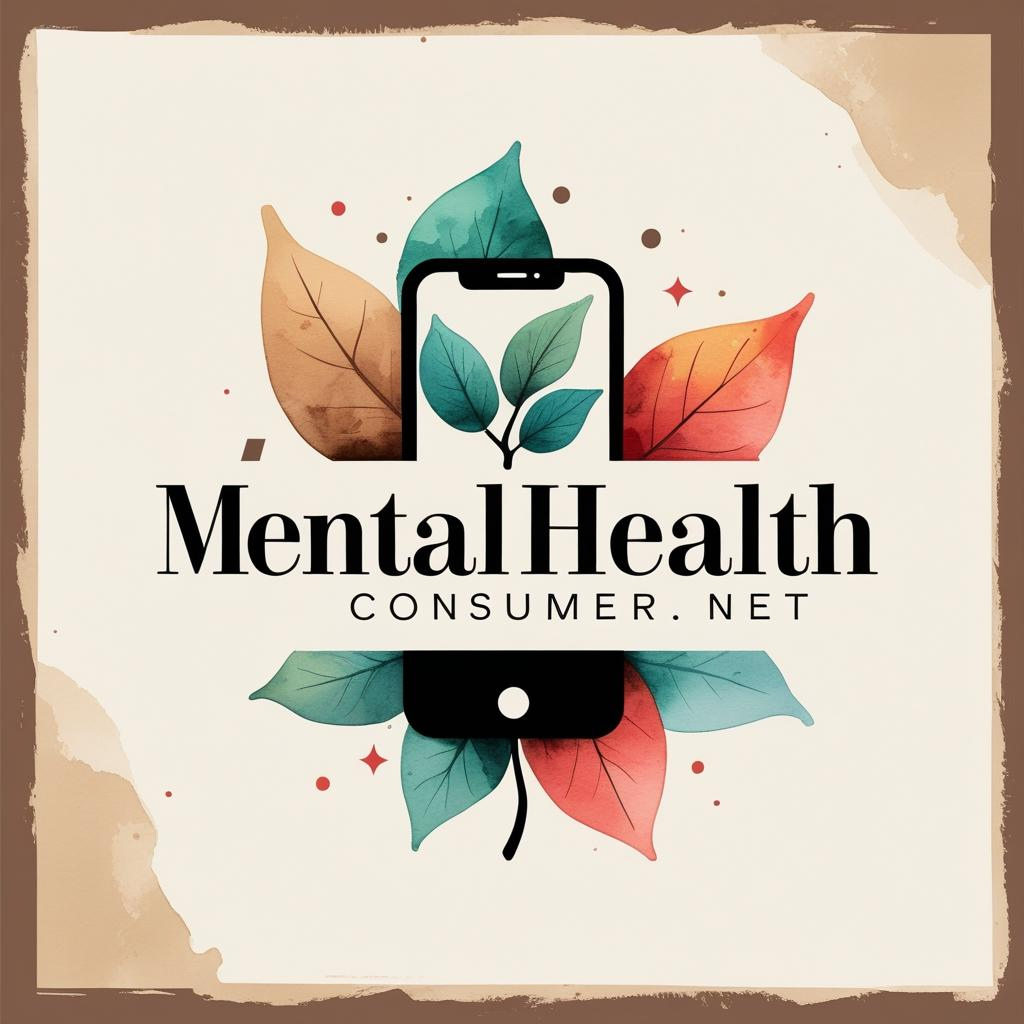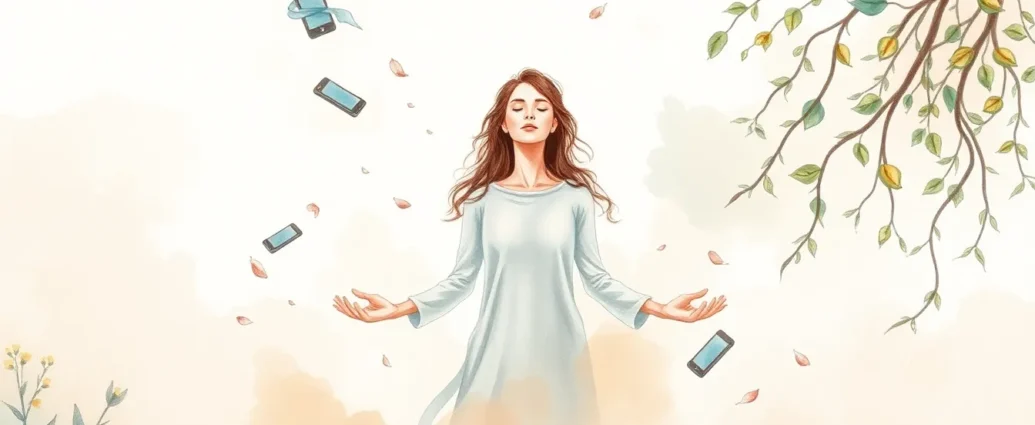7 Days to Digital Freedom: Your Step-by-Step Digital Detox Plan
The Moment I Knew I Had a Problem
I was lying in bed at 2:30am, mindlessly scrolling through TikTok videos of people organizing their spice racks. My phone was at 12% battery, my eyes felt like sandpaper, and I had a presentation the next morning I hadn’t even started. But there I was, watching a stranger alphabetize their cumin collection like it was the most important thing in the world.
That’s when it hit me—I needed a digital detox, and I needed it bad.
If you’re reading this (probably on your phone, let’s be honest), chances are you’ve had a similar moment. Maybe it was realizing you’d checked Instagram seventeen times before noon, or finding yourself refreshing email on a Sunday just because you were bored. Maybe your neck hurts from looking down at screens all day, or you can’t remember the last time you had a conversation without someone pulling out their phone.
Here’s the thing about a digital detox—it’s not about becoming some tech-hating hermit who knits their own clothes and grows their own kale. It’s about creating some breathing room between you and the constant buzz of notifications, and honestly? Seven days is the perfect amount of time to reset without feeling like you’re disappearing from civilization entirely.
Why Your Brain is Begging for a Digital Detox
Let me paint you a picture. Right now, the average person checks their phone 96 times per day. That’s once every 10 minutes during waking hours. Your brain is basically running a constant marathon of micro-distractions, and it’s exhausted.
When you’re constantly switching between apps, emails, and notifications, your brain never gets a chance to properly focus or rest. It’s like trying to have a deep conversation while someone keeps tapping you on the shoulder every few seconds. Eventually, you lose the ability to concentrate on anything for more than a few minutes.
The physical stuff is real too. All that screen time messes with your sleep because the blue light tricks your brain into thinking it’s daytime. Your posture probably resembles a question mark from hunching over devices. And don’t get me started on “phantom vibration syndrome”—when you swear your phone is buzzing but it’s just your nervous system playing tricks on you.
But here’s what really got me: the emotional toll. Social media creates this weird comparison trap where everyone else’s highlight reel makes your real life feel boring. You start measuring your worth in likes and comments, and before you know it, your mood depends on how much engagement your latest post gets.
A digital detox gives your brain permission to remember what it feels like to be bored, to sit with thoughts without immediately reaching for stimulation, to actually finish one task before starting another.
Before You Start: Setting Yourself Up for Success
Don’t just dive into a digital detox cold turkey on a random Tuesday. Trust me, I tried that approach and ended up back on my phone by lunchtime, feeling like a failure.
First, pick your timing. Starting on a Friday gives you the weekend to adjust without work pressure. Or maybe Monday works better for you—whatever feels right for your schedule.
Tell people what you’re doing. Send a message to close friends, family, and coworkers letting them know you’re taking a digital break. Give them an alternative way to reach you if it’s truly urgent (like actually calling instead of texting). Most people will respect what you’re doing, and some might even ask to join you.
Prepare your alternatives. This is huge. Don’t just take away your digital habits without replacing them with something else. Stock up on books, puzzle games, art supplies, or whatever offline activities sound appealing. The goal isn’t to be miserable for seven days.
Day 1: Ease Into Digital Awareness
Today isn’t about going completely offline—it’s about becoming conscious of your habits. Install a screen time tracking app if you don’t already have one (then you can delete it later), and just observe. No judgment, just awareness.
Challenge yourself to put your phone down for 30 minutes at a time. Start small. Maybe during lunch, or while you’re cooking dinner. Notice how often you instinctively reach for it. I bet it’s more than you think.
Create a charging station somewhere that isn’t your bedroom. This is non-negotiable. Your phone sleeps in the kitchen, bathroom, or living room—anywhere but next to your bed. Buy an actual alarm clock if you need one.
Turn off non-essential notifications today. You probably don’t need to know instantly when someone likes your photo or when that store is having a sale. Keep the important ones—calls, texts from family, work stuff if you must—but be ruthless with the rest.
Day 2: Morning Phone-Free Hours
This is where things get interesting. Today, don’t touch your phone for the first two hours after you wake up. I know, I know, it sounds impossible. But hear me out.
Instead of immediately diving into everyone else’s thoughts and problems, give yourself time to figure out how you’re feeling and what you want to accomplish today. Make coffee without scrolling. Eat breakfast while looking out the window instead of at a screen. Maybe even have an actual conversation with whoever you live with.
If you live alone, this might feel weird at first. That’s normal. Your brain is used to constant input, so the quiet might feel uncomfortable. Sit with it. Let your mind wander. You might be surprised what comes up when you’re not immediately filling every moment with digital noise.
Use this time to do something physical—stretch, take a shower, go for a walk, tidy up. Get your body moving before your brain gets sucked into the digital vortex.
Day 3: Implement Tech-Free Meals
Today we’re claiming back mealtimes. No phones, tablets, TV, or laptops while you eat. This might sound simple, but it’s surprisingly challenging.
When you eat without distractions, you actually taste your food. Wild concept, right? Your digestion improves, you eat more mindfully, and if you’re eating with others, you might actually have conversations that go deeper than “pass the salt.”
If you eat alone, this is a great time to practice just being present. Look around your space. Notice things you might usually miss. Let your mind process the day without outside input.
Evening challenge: After dinner, instead of immediately reaching for your phone or turning on Netflix, sit quietly for 10 minutes. No agenda, no meditation app, just you and your thoughts. It might feel uncomfortable, but that discomfort is telling you something important about how dependent you’ve become on constant stimulation.
Day 4: Create Digital-Free Zones
Time to establish some boundaries in your physical space. Pick two areas of your home that will be permanently phone-free zones. I suggest your bedroom and dining area, but choose what makes sense for your life.
The bedroom thing is crucial. Your bed should be associated with sleep and rest, not scrolling and stress. If you’re worried about missing something important overnight, remember—emergencies happened before cell phones existed, and people figured out how to handle them.
In your dining area, make it a rule that devices stay elsewhere during meals. If you live with others, this might require some negotiation, but it’s worth it. Meals become actual social time instead of everyone staring at their own screens.
Today’s big challenge: No screens for three hours straight. Pick a time that works for you—maybe 2pm to 5pm, or 6pm to 9pm. Fill this time with offline activities. Read a book, go for a walk, call a friend (actually call, don’t text), work on a project, or just sit and think.
Day 5: Practice Single-Tasking
This is going to feel revolutionary. Today, do one thing at a time. When you’re working, just work. When you’re eating, just eat. When you’re having a conversation, don’t also check your phone.
This probably sounds obvious, but most of us have forgotten how to single-task. We’re always multitasking, always splitting our attention, always half-present to whatever we’re doing.
Start with simple tasks. When you’re brushing your teeth, focus on brushing your teeth. Feel the bristles, taste the toothpaste, notice the sensations. When you’re walking somewhere, actually walk instead of scrolling while you move.
If you work on a computer, try the old-school approach of keeping only one browser tab open at a time. I know it feels wrong, but your productivity will actually improve when you’re not constantly switching between tasks.
Today’s evening challenge: Have a conversation with someone—in person, on the phone, wherever—for at least 30 minutes without any digital interruptions. Put devices in another room. Be fully present. You might remember why you like this person in the first place.
Day 6: Embrace Boredom and Creativity
This might be the hardest day because today we’re going to let ourselves be bored. I’m typing this with slightly shaky hands because the idea of being bored is almost scarier than being constantly stimulated.
When you feel the urge to reach for your phone today, don’t. Just sit with whatever you’re feeling. Boredom, anxiety, restlessness—it’s all information about your inner state that you usually mask with digital distraction.
Boredom is where creativity lives. When your brain isn’t constantly processing external input, it starts making new connections, coming up with ideas, solving problems in the background. Some of your best thoughts happen in the shower or while walking precisely because your mind is free to wander.
Today’s creative challenge: Do something with your hands. Draw, write, cook something complicated, organize a space, build something, play an instrument. It doesn’t matter if you’re good at it. The point is to engage the parts of your brain that have been dormant while you’ve been consuming everyone else’s creativity.
Day 7: The Complete Digital Fast
Here we are—the grand finale. Today is a full 24-hour digital detox. No phones, no computers, no TV, no tablets. Just you and the analog world.
I won’t lie to you—this day can feel intense. You might feel anxious, disconnected, or even a little panicky. That’s normal and actually valuable information about how dependent you’ve become on digital stimulation.
Plan this day carefully. Have activities ready. Go somewhere with poor cell reception if possible—a park, a hiking trail, somewhere that makes it easier to disconnect. Spend time with people who are also willing to unplug for the day.
If you live alone, this is a perfect day for solo activities you never make time for. Read an entire book, work on a puzzle, cook an elaborate meal, clean out a closet, write letters to people you care about. The goal is to fill the day with intentional activities rather than reflexive scrolling.
Pay attention to how you feel as the day progresses. The initial anxiety often gives way to a sense of calm and presence that might surprise you. Your nervous system gets a chance to actually relax.
What Happens After: Creating Lasting Changes
Congratulations—you survived seven days without being constantly plugged in. But here’s the thing: a digital detox isn’t just about those seven days. It’s about what you learn and what changes you decide to keep.
Some people go back to their old habits immediately after a detox, and that’s honestly fine. Sometimes you just need a reset, a reminder that you can survive without constant connectivity. But most people find they want to maintain some of the boundaries they’ve created.
Maybe you keep the phone-free bedroom rule. Maybe you maintain tech-free meals or continue having device-free time each evening. Maybe you’re more selective about which notifications you allow or which apps deserve space on your phone.
The key is to be intentional rather than reactive. Before you re-download every app and turn on every notification, ask yourself: Does this add value to my life, or does it just add noise?
Some apps might need to stay deleted. Some notifications might need to stay off. Some habits you’ve developed this week might be worth keeping long-term.
Dealing with Digital Detox Withdrawal
Let’s talk about the elephant in the room—withdrawal symptoms. They’re real, and they can be uncomfortable. You might feel anxious, restless, or like you’re missing out on something important. Your brain might feel foggy or overstimulated by silence.
These feelings are temporary, but they’re also telling you something important about how your relationship with technology has been affecting your nervous system. Constant digital stimulation keeps your brain in a state of mild stress, always ready for the next notification, the next update, the next hit of dopamine.
When you remove that stimulation, your brain needs time to recalibrate. Be patient with yourself. The restlessness will pass, and what emerges on the other side is often a sense of calm and presence you might not have felt in years.
If the anxiety feels overwhelming, remember that this is temporary. You’re not giving up technology forever—you’re just creating some space to remember who you are without it.
Building Better Digital Habits for the Long Run
The goal of a digital detox isn’t to make you hate technology. Technology is a tool, and like any tool, it can be used well or poorly. The question is: Are you using your devices intentionally, or are they using you?
After your detox, consider implementing some ongoing boundaries. Maybe you keep certain hours phone-free each day. Maybe you have one day per week where you minimize screen time. Maybe you’re more selective about which social media platforms deserve your attention.
Some people find it helpful to do mini-detoxes regularly—a few hours each day, one day per week, or one week per month. Think of it like exercise for your attention span.
The most important thing is to stay conscious of your habits rather than just falling back into unconscious scrolling. Check in with yourself regularly: How is my technology use making me feel? Is it adding value to my life or just filling time?
When Digital Detox Gets Social
One of the biggest challenges of a digital detox is feeling left out of social connections that happen primarily online. This is especially true if your friend group communicates mainly through group chats or social media.
Here’s the thing though—real friends will understand what you’re doing and find ways to stay connected that don’t require you to be constantly available online. If people can’t handle you being offline for a week, that might tell you something about the quality of those relationships.
Use your detox as an opportunity to deepen connections with people who matter most to you. Call them, write them letters, make plans to see them in person. You might discover that these deeper connections are more satisfying than the surface-level interactions that happen in the digital space.
Quick Takeaways for Digital Detox Success
• Start gradually rather than going cold turkey—small changes are more sustainable long-term • Replace digital habits with engaging offline activities rather than just creating empty time • Your bedroom should be a phone-free zone for better sleep and mental peace • Boredom is uncomfortable but necessary for creativity and self-reflection • Physical withdrawal symptoms like restlessness and anxiety are normal and temporary • Focus on single-tasking instead of constant multitasking to improve focus and satisfaction • Real connections often deepen when you’re not constantly distracted by devices
The Real Bottom Line on Digital Detox
Here’s what I wish someone had told me before my first digital detox: it’s not about becoming perfect or never using technology again. It’s about remembering that you have a choice in how you engage with digital tools.
Before my detox, I felt like my phone was controlling me—demanding my attention, interrupting my thoughts, dictating my mood based on what I saw online. After taking that break, I realized I could choose when to engage and when to step away.
Some days I’m better at this than others. Sometimes I still fall down social media rabbit holes or check my phone more than I’d like. But now I notice when it’s happening, and I have tools to redirect my attention when I want to.
The most surprising thing about a digital detox isn’t how hard it is—it’s how good it feels. The quiet, the presence, the sense of being connected to your own thoughts and feelings instead of everyone else’s. It reminds you that there’s a whole rich world that exists beyond screens, and you’re allowed to spend time there whenever you want.
Your digital detox doesn’t have to look like anyone else’s. Maybe seven days feels too long, or maybe you want to go longer. Maybe you can’t disconnect completely because of work, or maybe you want to focus on just one type of technology. The important thing is to experiment and find what works for your life.
The goal isn’t to judge technology as good or bad—it’s to use it consciously rather than being used by it. And honestly? Taking some time away from screens might be exactly what you need to remember who you are without them.
Frequently Asked Questions
What if I can’t do a full seven-day digital detox because of work? Start with what you can control. Maybe it’s digital detox evenings, weekends, or just specific apps. Even reducing your personal device use while maintaining work connectivity can have benefits.
Is it normal to feel anxious during a digital detox? Completely normal. Many people experience restlessness, anxiety, or FOMO during the first few days. These feelings usually fade as your nervous system adjusts to less stimulation.
Should I tell people I’m doing a digital detox? Yes, definitely. Let friends, family, and coworkers know so they don’t expect immediate responses. Many people will be supportive and some might even want to join you.
What if I accidentally use my phone during the detox? Don’t stress about it. If you slip up, just notice it happened and get back on track. Perfectionism isn’t the goal—awareness and intentional change are.
How do I handle emergencies during a digital detox? Keep your phone on for actual emergencies, but turn off notifications for everything else. Most “urgent” things aren’t actually urgent and can wait a few hours or days.
What’s the difference between a digital detox and just limiting screen time? A digital detox is usually a more intensive, temporary break that helps you reset your habits. Screen time limits are ongoing boundaries you maintain long-term. Both are valuable.
Can I still watch TV during a digital detox? That depends on your goals. Some people include all screens, others focus mainly on interactive devices like phones and computers. Choose what feels right for your situation.



